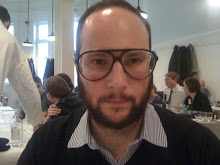
Parque Ibirapuera, Museu de Arte Moderna, São Paulo, Brasil

Claudia Andujar, Rua direita, 1970

Entrance to black box, Daria Martin, Soft Materials, 2004 - C. Andujar, Rua direita, 1970

Egle Budvytyte, Secta, 2007 + Miguel Angel Rojas, Faenza, 1979
 Miguel Angel Rojas, Faenza, 1979
Miguel Angel Rojas, Faenza, 1979 Miguel Angel Rojas, Faenza, 1979 and Santiago Monge, Burlesque, 2007
Miguel Angel Rojas, Faenza, 1979 and Santiago Monge, Burlesque, 2007 MAR, Faenza, 1979 + Cristina Lucas, You can walk too, 2004
MAR, Faenza, 1979 + Cristina Lucas, You can walk too, 2004 C. Lucas You can walk too, 2006 and Santiago Monge, Burlesque, 2007
C. Lucas You can walk too, 2006 and Santiago Monge, Burlesque, 2007 Santiago Monge, Burlesque, 2007
Santiago Monge, Burlesque, 2007
Flavio de Carvalho, New Look, 1956. Vintage magazines, drawing and photographs
 A verdade andava nua, 1949. Photographs of collective protest in Copacabana and Flavio de Carvalho, New Look, 1956
A verdade andava nua, 1949. Photographs of collective protest in Copacabana and Flavio de Carvalho, New Look, 1956
A verdade andava nua, 1949. Photographs of collective protest in Copacabana
 Ney Matogrosso/Secos e Molhados, Flores Astrais, 1975 e A verdade andava nua, 1949
Ney Matogrosso/Secos e Molhados, Flores Astrais, 1975 e A verdade andava nua, 1949 Secos e Molhados, Flores astrais, Video-clip + Traje metálico disenhado por [Metallic dress designed by] Mari Yashimoto
Secos e Molhados, Flores astrais, Video-clip + Traje metálico disenhado por [Metallic dress designed by] Mari Yashimoto Ney Matogrosso, Traje metálico disenhado por [Metallic dress designed by] Mari Yashimoto
Ney Matogrosso, Traje metálico disenhado por [Metallic dress designed by] Mari Yashimoto
 Ney Matogrosso, Água do Céu-Pasaro LP, 1975
Ney Matogrosso, Água do Céu-Pasaro LP, 1975
S. Monge, Burlesque, 2007 & fotografias de [photographs of] Brasilia, 1960

Fotografias do ultimo dia de construção e abertura de [photographs of last day of construction and opening of] Brasilia, 1960
 A verdade andava nua, 1949. Fotografias de protesto coletivo [Photographs of collective protest], Copacabana
A verdade andava nua, 1949. Fotografias de protesto coletivo [Photographs of collective protest], CopacabanaA Cidade Do Homem Nu
In 1930, Brazilian multidisciplinary artist and cultural agitator Flavio de Carvalho (1899-1973), introduced a master plan for a new city to be built in the tropics. His proposal, ‘A cidade do homem nu’ (‘The Nude Man’s City’), idealized a metropolis for what ought to be the man of the future: a man without god, without property and without marriage. A nude mankind that had stripped itself from its cultural constructs - or in de Carvalho’s words, "without scholastic taboos, free for reasoning and thinking". Within this new city, a Laboratory of erotica was to be constructed as a place against all socio-cultural fixations to the individual’s desires: “the nude man would select for itself its own forms of erótica, where no restriction whatsoever will enforce this or that sacrifice […] where it will project its loosen energy without repression, where it will realize its desires, discover new desires” (de Carvalho, 1930).
Bringing together artworks by contemporary international artists, archives and other cultural artifacts engaged within acts and forms of self representation and civil disobedience, the exhibition A cidade do homem nu seeks to instigate the radical and countercultural significance of de Carvalho's early century thinking found in his transgressive formulation to construct such a new urban landscape. With works by Claudia Andujar, Egle Budvytyte, Flavio de Carvalho, Cristina Lucas, Daria Martin, Santiago Monge and Miguel Angel Rojas. Also featuring visual material from Brazilian rock singer Ney Matogrosso and a documentary by Tatiana Issa and Raphael Alvarez on the 1970's tropical-queer theatre group Dzi Croquettes. Curated by Inti Guerrero.
A bilingual publication including a curatorial essay and archive texts written by Flavio de Carvalho in the 1930's is being released at the exhibition.
Images reposted from, and more information and images available from: www.acidadedohomemnu.blogspot.com
A cidade do homem nu
16 April - 13 June, 2010
Museu de Arte Moderna de Sao Paulo
Teu - Sun: 10h - 18h
Parque do Ibirapuera, portao 3 - s/nº
04094-000, Sao Paulo - SP Brazil.
Tel: +55 11 5085-1300














No comments:
Post a Comment